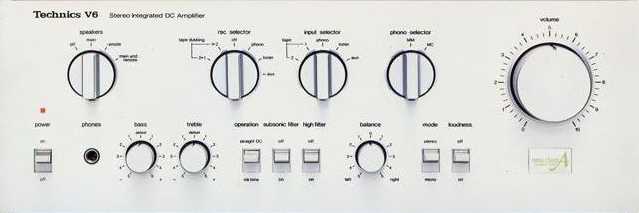
Technics SU-V6 & SE-A7This amplifier has been in use for three decades and still provides an excellent reference. Two failures have occured in this time, an RIAA input FET and one of the smoothers. A PDF of the service manual is available.

Apart from offering extensive switching arrangements (up to three tape decks could be plugged in), it used the 'New Class A' biasing arrangement which intended to retain class B efficiency with class A low-level distortion ('New Class A' on left below, class B on right).

This was put on a bench when new (RIAA FET) and compared to all the other amplifiers examined, repaired and built at the same facility, this one stayed. The commonest compliment paid by others was that "it makes the speakers come alive". Use with the boron-pipe cantilever Technics EPC-205C Mk3 moving magnet cartridge is recommended. An adequate record-deck is the SL-Q2 which can sit on top, making a very impressive 'record-player'.Each output half is a triple Darlington which has a variable clamp applied to the second transistor's base biasing the output device over the transition period. These then are not turned off, preventing the switching phenomena that traditionally plagues class B operation, a fact demonstrated if the clamp is adjusted for zero effect.
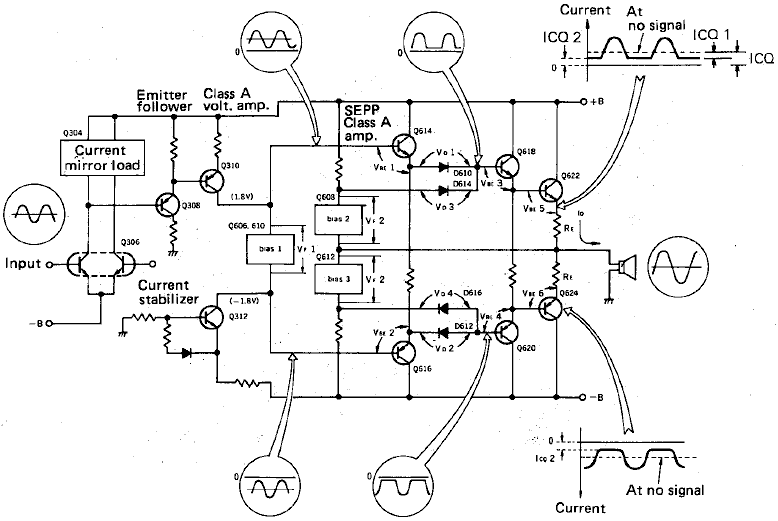
The DC balance (R354) is set up first (0V on output), then the clamp voltage is adjusted (1mV across R658 after 10 minutes warm-up), then Icq is set (10~15mV across R658 after 10 minutes warm-up). The clamp voltage can be resolved (minimum distortion) with a distortion meter or decent 'scope at 20kHz (16V output). Note that the clamp diodes are germanium types. The dual FET/transistor input pair and current mirrors are familiar from other Technics designs.
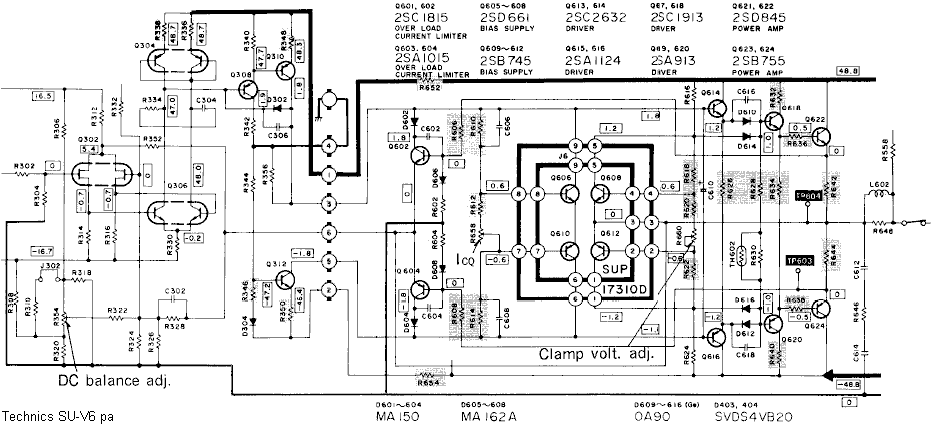
The PA PCB carries the power supply components. This arrangement reduces high current wiring and gives low impedance runs between the smoothers and output transistors, each of which, in effect, has it's own smoother. A single split transformer winding fed separate bridge recs. The differential input and class A amplifier are mounted on a separate PCB that plugs into the far end. Small PCBs carrying the bias transistors are fitted to each heat-sink above the furthest output devices.
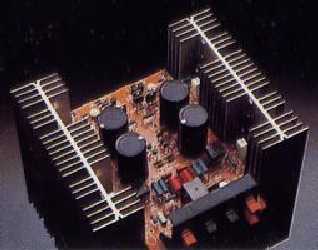
This arrangement has been used before, for example, many similarities in the layout with the earlier SE-9060 can be seen below, notwithstanding those in the actual circuit.
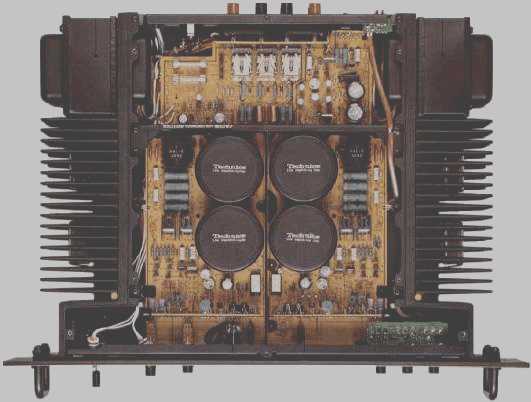
Given the proven performance of these, serious consideration was given to applying a 'New Class A modification' to this model, both amplifiers being capable of producing subjectively profound and detailed soundfields, but a lack of time precluded the possibility. Of roughly the same rated performance the later amp's distortion improves on the older one's (0.02%) by a factor of nearly 3 (0.007%) and includes a useful and adequate preamp.A simpler non-variable clamp was used in the slightly later SE-A7 (below). Note the near symmetry and the use of discrete devices, not paired ones, in the front end. The AN6552 dual opamp DC servos are not shown for clarity.

This was a very slim design with low quoted distortion figures offering an improvement on the SU-V6's and BTL (balanced transformerless) operation for professional use. Schematics of the protection circuitry can be found here which acknowledged limitations with overheating.Sandman's 'class S' (WW, Sept. '82, pp38-39) was adopted for later designs described as 'class AA' that could be complex.
Contact me at paulkemble@hotmail.com
especially if you want additional content to this page
or if you find any links that don't work. Don't forget
to add the page title or URL. Take care!
Back to index, sound, tips or home.